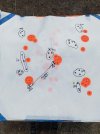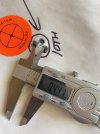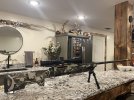I have a lot of guys that swear by seating depth being key with different powders but I swear it seems like there is so much more in making those forgiving loads come together. Powder really seems like a big roll in that. More so than I imagined, even with powders landing in that same burn rate range. It seems, there are still those powders that just aid in forgiveness with a wider range of nodes.
Im a fairly decent shot with lots to learn to come to my full potential down range. What are some key factors some of the more experienced reloaders are looking for when searching for those forgiving loads, and what process does one use to get there ?
Here's a ladder test with a relatively large node with very good accuracy. Enough to possibly make me switch loads for my trip to Alaska.
Im a fairly decent shot with lots to learn to come to my full potential down range. What are some key factors some of the more experienced reloaders are looking for when searching for those forgiving loads, and what process does one use to get there ?
Here's a ladder test with a relatively large node with very good accuracy. Enough to possibly make me switch loads for my trip to Alaska.
Attachments
Last edited:



